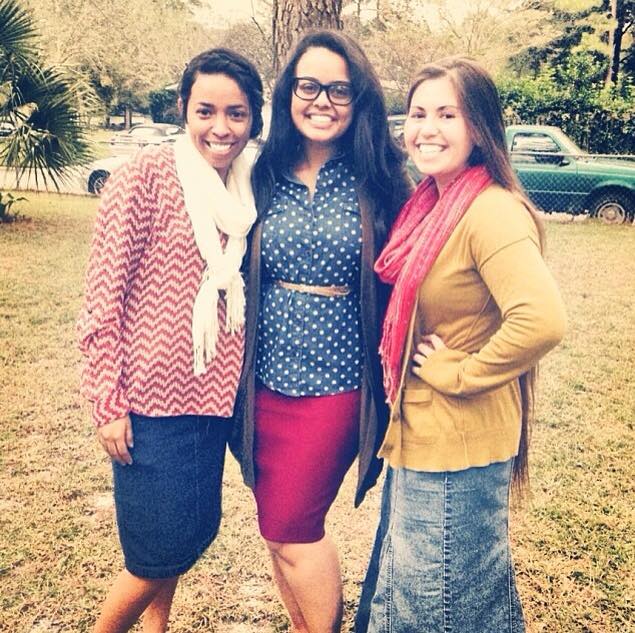"Dude, you've...um...I think you have dirt on your face."
"No sir, it's not dirt. It's a marker of allegiance to a particular strand of religiosity, in this instance focused on a liturgical posture of penance, which, in turn, may have little bearing on my day-to-day lived religious identity and practice....but yeah, otherwise, it's dirt on my face."
Or, perhaps, ash would be more accurate. Tomorrow (February 18, 2015) is Ash Wednesday. Millions of Christians across the world -- Catholic, Lutheran, Anglicans, others -- will commemorate the commencement of Lent -- a 40-day penitential season of fasting and preparation preceding Easter, the celebration of Jesus' resurrection from the dead -- with the "imposition" or "infliction" of ashes on their foreheads.
*For more on religion & culture, follow @kchitwood on Twitter
Christians are not alone in marking their faces with religious symbols. There are traditions in India, New Zealand, sub-Saharan Africa and elsewhere that involve religious symbology being born on foreheads, cheeks, and mouth. While this may seem an extreme sign of devotion, more often than not, these religious facial markings tell us relatively little about the lived religion of the devotee marking their visible features with spiritual symbols.
Ash Wednesday
The symbol of ashes on the forehead are meant to serve as a reminder of the contrite believers' physical return to dust (accompanied by a ritualistic repetition of "ashes to ashes, dust to dust" or "from dust you came, from dust you shall return") and their spiritual condition as sinners in need of mourning over their sin, confession, and repentance.
A Filipino woman has her forehead graced with ashes in remembrance of the Christian holiday "Ash Wednesday," marking the culmination of the penitential 40-day season of Lent.
While traditionally practiced among Roman Catholics, Anglicans, Episcopalians, and Lutherans, there are a growing number of evangelical and other mainline Protestant churches taking up the practice. And not only are Christians getting their ash in church, they're getting dusted in the streets. In her book City of God, recovering journalist and Episcopalian lay liturgist Sara Miles shared her Lenten adventure of perambulating San Francisco's mission district in black cassock on Ash Wednesday marking those she meets with the ashes of Lent. There, in the cracked sidewalks and fractured realities of the city she calls home, Miles finds bodies marked not only with poverty and pain, but "the realities of death."
Revealing in an interview with Publisher's Weekly the premise that "God has left the [church] building," Miles believes she does not take faith to the streets, but finds it there. "I am in this privileged position to get to see what people's experience of faith and God is, and for each person it is slightly different." In her book she aims to voice this urban canon, this discovery of people who are "hungry for something that's real."
Of marking foreheads with ashes, Miles says the yearning for belief that is solid and can be touched is part of the draw of that ritual. "It's stunning how many people want to be told they are dust and that they will die," she says. "The chronic lie of our culture is that people don't die. But people want to know the truth."
For over twelve hundred years on the dies cinerum (Day of Ashes) faithful followers have approached the altar to receive ashes on their foreheads. These ashes are often made from the burnt palm fronds that were blessed on the Palm Sunday of the previous year. The ashes are sprinkled with water, usually fragranced with incense and blessed. The ceremonial use of ashes for repentance and penance can be traced even further back and is practiced throughout the world.
What this seemingly utmost devotional act does not reveal is how quickly many practitioners may wash their foreheads or remove their ashes once they leave the sanctuary. In the case of the individuals on the streets of San Francisco, and elsewhere, that get their ashes to-go, it tells us nothing of their personal faithfulness through the rest of Lent or as day-to-day Christians for that matter.
South Indian Tripundra
The same can be said for the mark of a saiva in South India known as the "tripundra" (also "tilak").
Consisting of three horizontal lines of vibhuti (holy ash) on the forehead often with a dot (bindu) acting as "a third eye," the tripundra may evoke a sense of the Ash Wednesday practice. However, there are different motivations in this Hindu tradition. The three lines symbolize the the real self's (atman's) three bonds: anava, karma, and maya.
Anava is the sense of "I" or "mine" within each of us and is, according to the Shaiva tradition under consideration by Dr. Elaine Fisher of the University of Wisconsin-Madison, the impetus for the individual atman's misplaced notion of separate being apart from the god Shiva. It is the final bond to be broken before moksha, or self-realization and release. Karma literally means "action, work or deed." In both Buddhist and Hindu traditions, karma is the universal law of cause and effect -- the effect (or fruits) of a person's actions not only have ramifications in this life, but also in the next. Over the centuries, the various schools of Hinduism have conceived of many variations on the karmic theme, some making karma appear quite deterministic, others making room for free will and individual agency. Maya is power and wisdom. The debate rages over whether this ability is real or illusory. In some Vedic texts, maya is a "magical show, an illusion," but in Shaivism maya is potent and truly existent and deterministic. It is real insofar as it endows the individual with the cosmos, tangible elements of the world, and a body to be realized, and to practice, in. However, the vibhuti, composed of burnt cow dung, or in some Shaiva traditions the funerary ashes of cremated corpses, is an omnipresent reminder of the temporary nature of physical existence and the urgency to strive for self-realization and spiritual attainment (moksha).
As Fischer explained the bearing of tripundra actively mark's one in South India as part of a certain body/religious public and community, but it tells us little else about other aspects of their religious identity.
Māori Ta Moko
This dynamic is even more evident in the modern practice of ta moko among Māori, and others, in Aotearoa (New Zealand).
Uetonga tattooing his son-in-law Mataora in the under world.
The Māori traditionally chiseled marks on their faces, called ta moko. Each individual’s ta moko is unique and sacred to them. As mentioned, the traditional way of applying ta moko to the face was to dip a narrow blade in black pigment and then tap the blade with a mallet to chisel deep incisions into the skin. This process not only left a tattoo of the designs, but permanent grooves in the skin. Today, most ta moko are tattooed according to international standards, but still informed by Māori lore.
The traditional form of ta moko was practiced by tohunga, who were both ritual experts and skilled artisans. A woman’s moko, which covered only the chin and lips, would take one or two days to complete. A man’s moko, which covered the whole face, was done in stages over several years due to the immense pain, swelling, and blood often involved in the process. Because of this, while the scars were healing, the person being tattooed was in a state of tapu (taboo, sacred or set apart). They could not look in a mirror, touch their own food, engage in sexual activity, or even wash the tattooed skin.
It is mythically believed that the Māori received the practice of ta moko from the underworld -- Rarohenga -- when the ancestor Mataora went in search of his wife Niwareka there. Encountering a different people than what he was used to in "the upper world," Mataora came across a man being tattooed and bleeding profusely. He thought something must be wrong. Uetonga, the chief applying the tattoo, informed Mataora that his method of tattooing was permanent, while the upper world's was "merely a marking" (whakairo tuhi or hopara makaurangiI) that could be wiped away. The tattoos were often made of red, blue, and white ochre and were temporary. Uetonga then smeared Mataora's tuhi and instructed him in the ways of ta moko, puncturing his skin and marking the lines in his face with a chisel. When Mataora returned to the upper world, he adopted ta moko and made it known among the Maori and their neighbors. As the myth says, "prior to the visit of Mataora to Rarohenga, people painted pictures on their faces" and now they practice "real tattooing by puncture."
Since the 1970s and 80s, some Māori have begun wearing ta moko again as a marker, and assertion of their cultural identity as part of the wider Māori cultural revival (Ngā tuakiri hōu). Even a few Māori tattoo artists are reviving traditional methods of applying ta moko to the face, thighs, and arms. Formerly a sign of status and prestige, now Māori people who wear ta moko assert their identity in a world of rapid change and cultural incursion.
Sub-Saharan African Tribal Marks
A Maasai woman with facial markings on her cheeks.
Similarly in many locales throughout sub-Saharan Africa various tribes include face markings as part of their ethnic identification. However, some markings in African tribes have more spiritual intimations. In some Yoruba settings children believed to be a "reincarnated child" (abiku), will be given marks on their face and body. It is believed that to take away the potentially destructive spiritual powers of the child, he/she has to be identified by the marks when he/she is born. Otherwise, it is believed, the child may die at an early age. It can also be used to wade away evil spirits ravaging around a certain group of people or family. In this case, the marks are not only on the face but other parts of the body as well. In Ghana among most tribes a "reincarnated child," referred to as "Kosanma" will bear "Donko" marks on the face.
Like the Yoruba, most tribes in sub-Saharan Africa give marks to their people for spiritual protection. Most often, it is religious ritual experts (shamans, herbalists, etc.) who apply the marks by cutting the body and inserting powerful herbs with spiritual potency to help heal the wound. Cuts will not only be made on the face, but on hips, wrists, stomachs, and shoulders.
Regardless of the source or tradition, most who do not practice such religious facial markings may react with surprise or even horror when they see someone with their religious identity splashed, or scarred, across their faces. Extreme. Outlandish. Drastic.
In one sense, inscribing, or marking, one's religion on one's face is powerful and evocative. Not only does it identity the believer with a particular religious or cultural community, it also locates that believer within the drama. By marking one's body, either permanently or temporarily, the adherent weaves themselves into the dogmatic and ritualistic narrative of their religion. With permanent markings, this placement is deeper both physically -- scars and chiseled skin -- and spiritually.
Yet, as has been hinted at throughout this post, while these markings may disclose a particular religious self-identification or membership in a certain religious community or body politic, they tell us very little about how these individuals construct their daily religious life or if they do so at all. In a globalized world, cultural identity is a precious commodity. Thus, facial markings are a way to fetishize the body, to inscribe it with communal meaning, profound purpose, and public sacrality in a world perceived as increasingly homogenous, superficial, individualized, secular, and privatized.
More often than not, these markings are temporary. When they are not, they are markers of cultural identity more than religious ritual. Either way, they force the issue of religiosity in the 21st-century and continuously drive us to ask why it is that so many, whether Christian or Māori, Yoruba or Hindu, choose to not only bear their religion on their face, but put it in ours as they meet us in the public square. By proudly bearing their markings for a day, a season, or their entire lives, these devotees and religious faithful are a constant reminder that religion has not gone by the wayside in a globalized world, but is ever more present, potent, and potentially "in our face."
*For more on religion & culture, follow @kchitwood on Twitter













